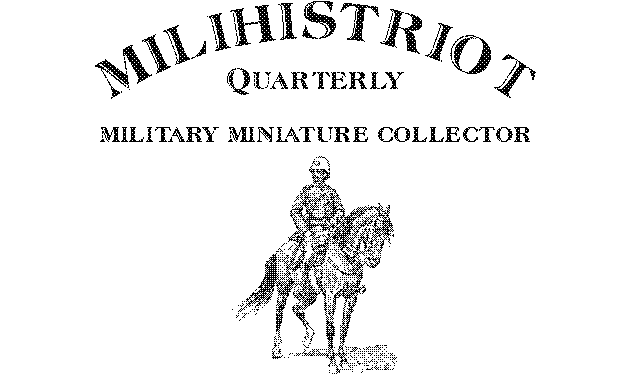
Copyright 2005 T. Sheil & A. Sheil All Rights Reserved

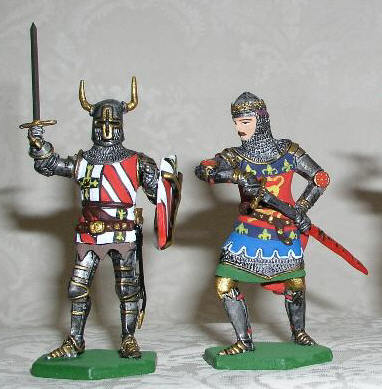
The Hobby of Military Miniatures is vast, and within it are various specialties. All men may be created equal, but all miniature soldiers are not! Here is a brief look at the categories of figures:
| Photo | Type | Description |
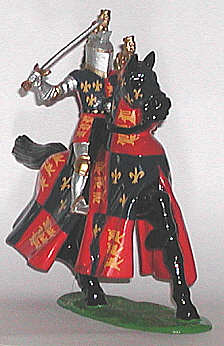 |
Military Miniature | High-quality figures exhibiting accurate details and proportions, and authentic accouterments. The better type of military miniature is a product of exhaustive research and exquisite sculpting. |
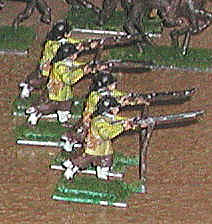 |
Wargame
Figure |
Small-scale figures made to be used en-masse on a miniature battlefield. These range from crude to well-detailed. |
 |
Toy (tin) | Older toy soldiers cast in metal and given rudimentary paint work. |
 |
Toy (other) | Plastic, pvc and modern toy soldier types, may be painted or unpainted. |
| Decoration | ||
There is a more specialized approach to miniature figures. There are ardent collectors for each of the figure styles shown below. Each is both a specific type and is made of a particular material. Miniature collectors are as concerned with the sculpting and finishing as they are the materials used in making a figure.
Specific Styles and Materials
| Photo | Type | Description |
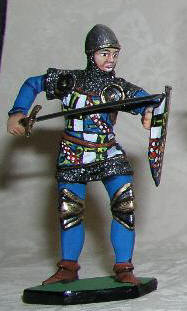 |
Metal Miniature | Miniatures cast in an alloy of tin and other metals. These are among the most realistic figures, when painted by a master artist. Sizes vary, but the most common scales are 54mm and 75mm. |
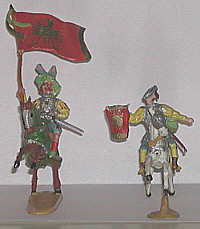 |
Plastic Miniature | Hard plastic figures with notable realism and detail, painted realistically. Plastic is generally has less value among military miniature enthusiasts. Sizes range from 20mm to 75mm. |
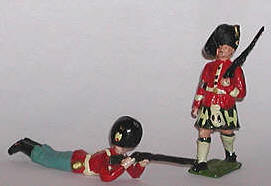 |
Tin Toy | Classic toy soldiers cast in metal alloy and given a basic paint job. They have less detail and tend to be somewhat crude, when compared to better military miniatures. Sizes were mainly 48mm to 60mm, wit ha few larger "dimestore" figures made by a few U.S. firms. |
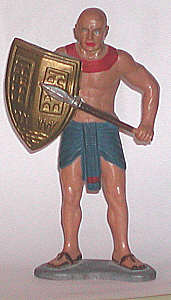 |
Plastic Painted | Painted toy figures, usually hard plastic or PVC |
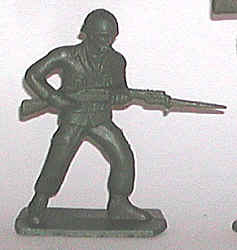 |
Plastic Toy | The typical "army man," cast in soft plastic and sold by the bag. The most common sizes are from 2" to 3" tall. Being toy figures, detail and authenticity are nominal, at best. |
 |
Composition | Figures made of a material that usually entailed sawdust, glue, and other substances which dried into a hard but light form. Most were produced in Germany between 1920 and 1945. Some were made in Japan in the Postwar era. Size ranges from 75mm to 100 mm. |
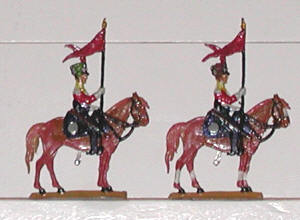 |
Flat | Tin alloy figures that are almost two-dimensions. The sides are embossed, but they are as flat as a dime. The4se were the original tin soldiers, and they continue to be designed and produced by specialty makers in Germany. The most common sizes range from 30mm to 40mm. |
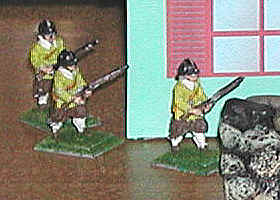 |
Wargame 25 - 30 | Small alloyed figures used for massed armies in miniature war games. Sizes vary from 15mm to 30mm. Available in metal alloy and plastic. |
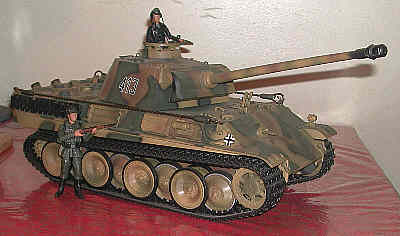 |
Vehicles | Models of military vehicles, in scales ranging from 1/300 to 1/6. Made of plastic or metal alloy. The most popular subjects are tanks and armored vehicles |
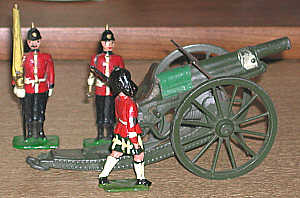 |
Artillery | Models of cannons, catapults and other heavy weapons. In alloy, plastic or other materials. |
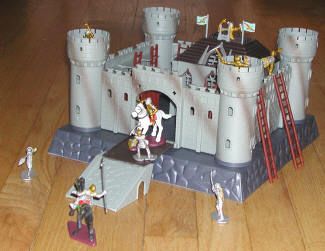 |
Structures | Models of bunkers, castles and fortifications. May be of any material. Sizes vary, but most are scaled for use with model figures. |
| Flats | The original "tin soldiers" are wafer-thin figures with embossed details. They were originally cast in slate molds. Flats came as individual figures and in sets. A single piece could be an individual soldier or an entire vignette. The makers cast military figures and a host of civilians, from Biblical scenes to processions, safaris, and holiday pieces. |
| Round | These are figures that are full in all three dimensions. They are also called "full round." |
| Semi Round | Somewhere between flats and full round figures, semi rounds were common in old homecasting molds. |
| Hollow Cast | Full-round figures cast in metal alloys which are hollow inside. These were the most common toy soldiers from 1900 to 1950. They were painted and sold either individuals or in boxes sets. |
| Solids | Any full-round, metal toy soldier that is not hollowcast. It is solid metal throughout. |
| Dimestore | American-Made lead toy figures, sold individually. They are among the most toylike lead figures, and tend to run larger than standard collectible figures. Most are hollowcast. Domestore figures faded out after 1950. |
| Plastic Army Men | Plastic toy soldiers sold in plain plastic bags, army men have been around since the late 1940s. They are found in bags and in playsets, often bundled with other items such as cannons, tanks, etc. Army men vary as to realism. Some are fanciful figures, while others are authentic, detailed miniatures. Hobby figures are a type of army men sold boxed in hobby shops. These tend to be detailed miniatures rather than crude toys. |
| Plastic Kits | These are like model kits, but of course, they produce military miniature figures. Some are sold alone, others are sold in conjunction with military vehicle model kits. |
| Metal Kits | These kits are metal castings, usually lead or pewter alloys, which are sold for those who prefer to paint and finish their own miniatures. Characteristically, these kits have exquisite detail. They often represent unusual, hard to find troops. |
| Action Figures / Dolls | These miniature soldiers are like dolls, being human figures which are dressed in miniature cloth outfits and fitted with miniature equipment. They received great popularity with the soldier dolls introduced in 1964. Today,.several makers produce action figures. |
| Composition | Popular in central Europe prior to World War II, composition figures were made of sawdust, glue and other materials. |
| Paper | Paper and cardstock soldiers have been around a long time. They are images of soldiers printed on stiff media, so that they can "stand." Some are printed on both sides |